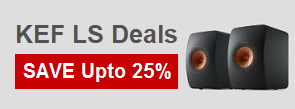Features
| Warranty length | 2 Years |
|---|---|
| Brand | Melco |
Tech Specs
- 1 x specially selected 6TB HDD or 1 x specially selected 3.84 TB SSD
Network connectivity
- LAN Port-Gigabit Ethernet (1000Base-T),
- Dedicated PLAYER port
- Gigabit Ethernet (1000Base-T),
- DHCP server in isolated modeUSB connectivity
- USB 2.0 port USB DAC-dedicated
- USB 3.0 backup port
- USB 3.0 expansion port
- USB 3.0 port for music importing and CD drives
- USB 3.0 front panel port for importing and DACs
- USB player file support: DSF, DFF, FLAC, WAV, ALAC, AIFF and AACUSB player sample rate support
- 16-32 bit (PCM) to 384 kHz:-auto downsample to suit connected DACs
- Gapless PCM support
- 1 bit (DSD) to 11.3 MHz Quad DSD
- Markerless DSD support
- DSD to 32 bit PCM conversion selectable
- Gapless DSD support
- OLED displays player sample ratePower supply
- 100-120 VAC, 220-240 VACSize 436 x 62 x 352mm
- Weight 7 kg
Product Description
Melco N50 music library is a step up from the entry level N100 and is a full width design with the option of 6TB hard drive – or you can upgrade to a 3.84 TB SSD for lightning fast performance. SSD stands for Solid State Drive and is designed to be much faster and more reliable than mechanical drives.
The full width design of the N50 is more suited to complement other hi-fi separates and Melco have blended a traditional design aesthetic with state-of-the-art audio processing.
What is a music library?
A music library, in this case, refers to a device that stores music internally, on a hard drive, as opposed to streaming it online. As a result, the N50 makes a great addition, for ripping large collections of CDs. N50 is designed to rip your collection in the best possible quality, using either Wav or FLAC formats.
FLAC is recommended as it has metadata that can store the track name and other data. The 6GB drive has an anti vibration device – or alternatively, the 3.84TB has no moving parts.
Just like with the N100, the N50 is designed principally for purist music storage. It is not a streamer or DAC – it purely offers close to bit-perfect storage and can be used to rip your CDs when combined with the D100 (available separately). You can connect the N100 via USB to an external DAC or via Ethernet to an external streamer.
USB Performance
The USB connection uses Melo written protocols. The purpose of these is to give the best possible performance and the best signal to the DAC. To RIP CD’s Melco D100 optical drive is available, for superior results. You can also use a standard optical drive.
High build quality
The N50 has no less than four USB ports, one for Backup, one for expansion and one for connection to a DAC. There is also an extra USB 3.0 port. This saves on lead swapping, as a large external drive can be left connected for backup.
The front panel buttons have a positive click and the OLED display is easy to read and generates no noise. The USB ports make it easy to import from flash drives and CD or HDD drives. The internal power line has a noise filter and the output to the DAC uses the 1-bit DSD format
What is DSD and why use it?
DSD was originally developed as a more efficient way of archiving old analogue recordings. It is the closest you can get to the sound of analogue in a digital format. CDs are encoded using PCM or pulse-coded modulation at a bit rate of 44.1kHz and a word length of 16bit. On the other hand, DSD uses a much higher sample rate of several MHz and only one bit.
While CD quality is high, PCM is not very efficient. As a result, DSD was developed. The format uses one bit to encode the music. It uses a sampling method that checks to see if the previous sample was higher or lower than the current one. The sampling rate can be up to 11.3Mhz with QUAD DSD. The DSD sample rate is always a multiple of 44.1kHz.
All of the Melco music libraries support QUAD DSD. Moreover, they have developed a more advanced form of DSD. This is known as Markerless DSD. Normally DSD uses data packets to send the audio. However, packets usually have markers which can load the processor. The Melco version does not use packet markers as a result the audio stream is as pure as possible. Most modern hi-end DAC’s can decode Markerless DSD.











































































